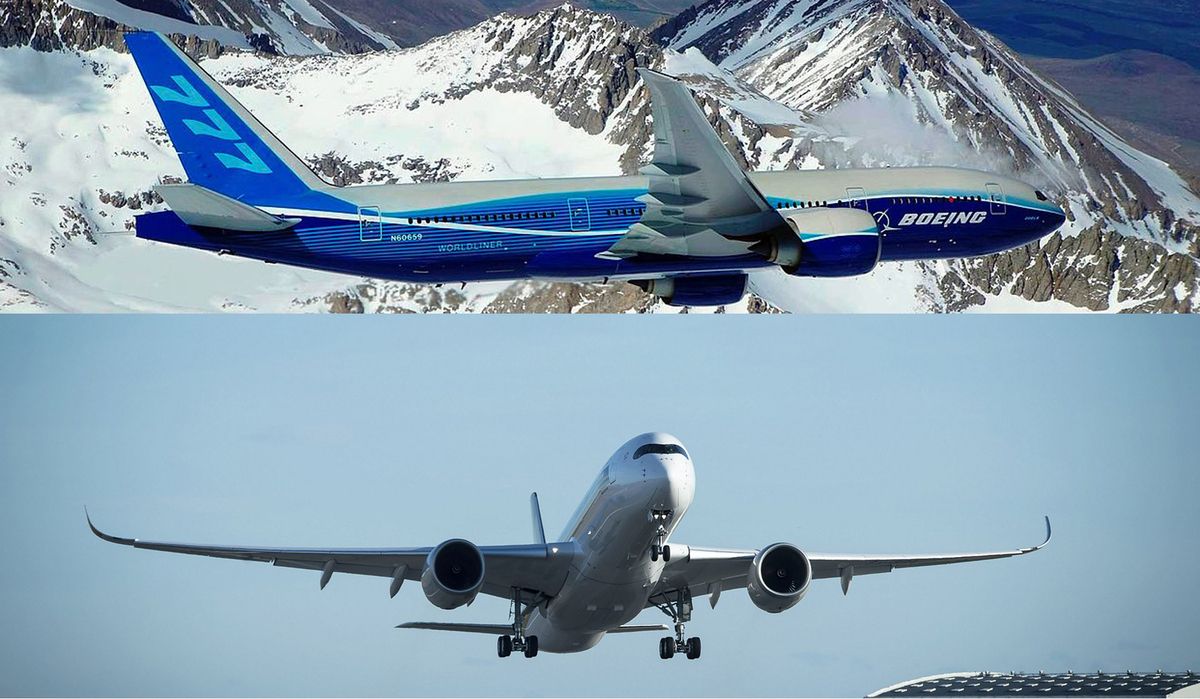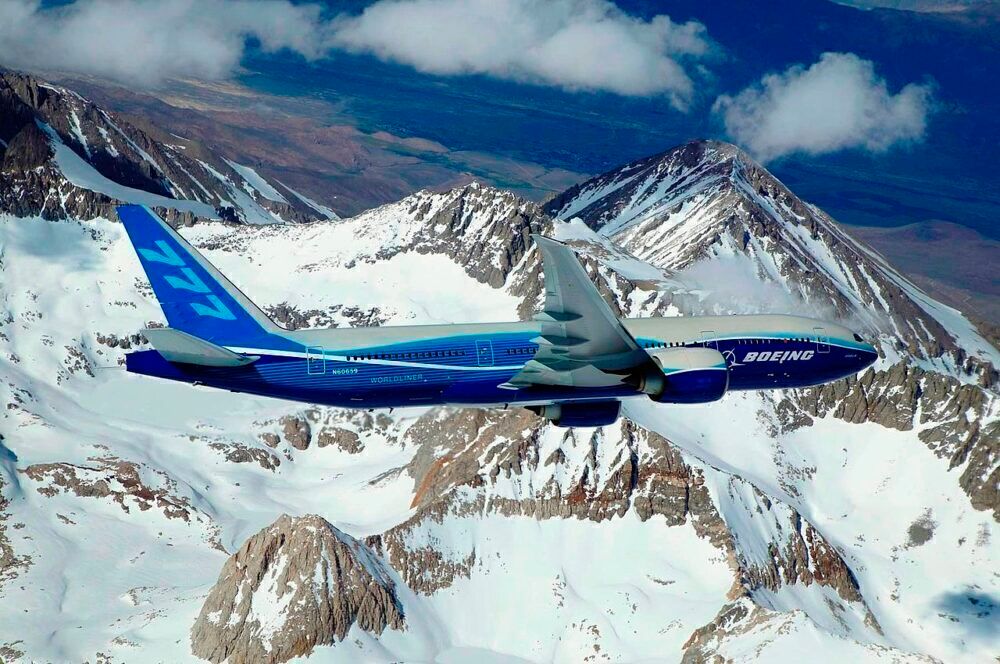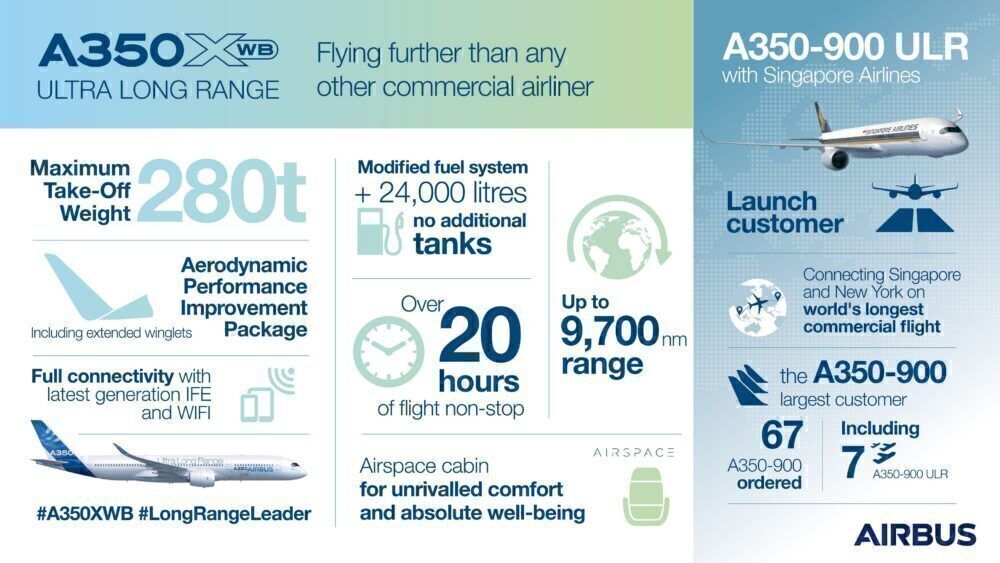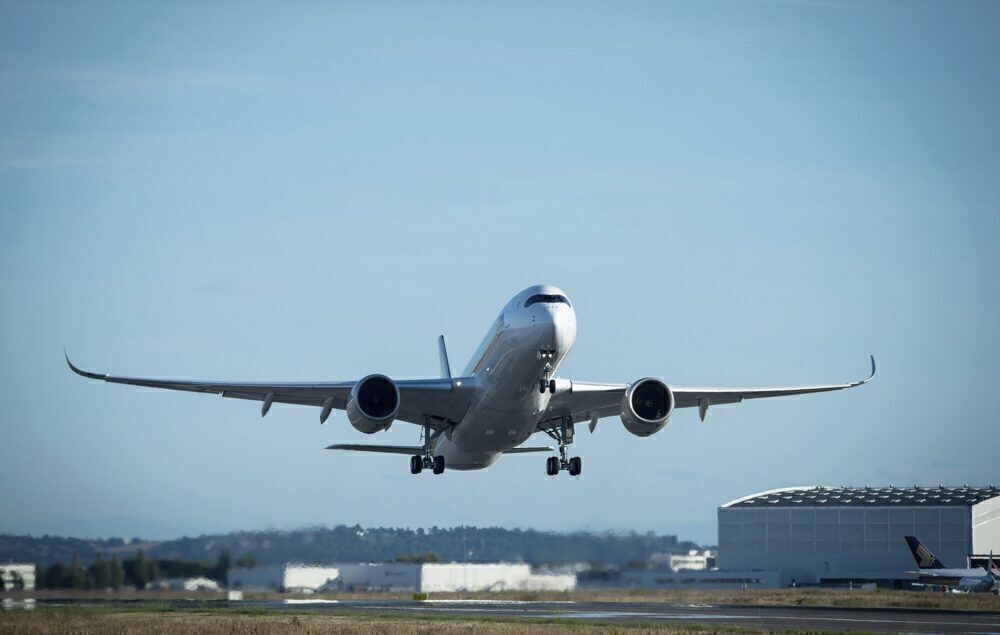In the battle to produce aircraft that can perform ultra-long-range missions, aircraft manufacturing rivals Airbus and Boeing have produced some twin-engined aircraft with impressive long-range capabilities. Let's examine and compare two of these aircraft: The Boeing 777-200LR and the Airbus A350-900ULR.
The importance of timeline
Before we compare the performance of each aircraft, it's important to know when they were built. Indeed, technological progress and new developments continue to push the efficiency and range of aircraft. This makes it difficult, or even a little unfair, when directly comparing aircraft which are years apart. So how do the two jets differ?
March 8th, 2005: The date of the very first Boeing 777-200LR flight. The jet took off from Everett, Washington, for an initial three-hour flight.
April 23rd, 2018: The first A350-900ULR, MSN 216, completed its first flight out of Toulouse.
With the above dates, we can see that the two aircraft are 13 years apart - a fairly significant divide in the world of commercial aircraft development. Therefore, before even looking at the numbers, we can assume that the A350-900ULR will have the upper hand.
Stay informed: Sign up for our daily and weekly aviation news digests
The specifications
So how do the two aircraft actually compare in terms of performance? Here is how the specifications break down...
Boeing 777-200LR
- Range: 8,555 nmi (15,843 km)
- Capacity: 301 passengers in three classes, 440 passengers max.
- MTOW: 347,500 kg (766,000 lb)
- Fuel burn rate: Approximately 6.8t per hour
Airbus A350-900ULR
- Range: 9,700 nautical miles (17,964 kilometers)
- Capacity: 300-350 passengers in three classes, 440 passengers max.
- MTOW: 280,000 kg (617,000 lb)
- Fuel burn rate: Approximately 5.8t per hour
Comparing the performance of the two aircraft, we can see that their sizes are essentially identical. However, that's where the similarities end. The A350-900ULR outperforms the 777-200LR where it matters most: Range and fuel burn, with the Airbus flying much further while burning less fuel. As we noted above, this isn't much of a surprise, considering its development was 13 years later.
The 777-200LR does have a higher maximum take-off weight (MTOW). A portion of this increased weight is the additional capacity needed to store fuel to go the distance. In addition to burning more fuel, the extra weight will also result in more expensive operations, with most airports calculating landing fees based on MTOW.
Popularity with airline customers
This is where the Boeing 777-200LR beats out the A350-900ULR in a big way. At this time, the 777-200LR has racked up 61 orders, with 60 aircraft delivered. The one outstanding order is for Turkmenistan Airlines. This was ordered in 2019 and has yet to be fulfilled. Notable operators of the type have included Delta Air Lines, Emirates, Qatar Airways, Air Canada, and Ethiopian Airlines. Delta Air Lines has since retired its 777 fleet.
On the other side, the Airbus A350-900ULR has only received a mere seven orders. All of these come from Singapore Airlines. The jet primarily features on the carrier's ultra-long-distance route between Singapore and New York. This lack of popularity can be explained by a number of factors.
- The ultra-long-haul game, requiring the range of the A350-900ULR, is a tiny market to begin with. Few city pairs have a level of demand to justify a direct, non-stop service- while some passengers would prefer making a stop on such a long trip anyways.
- The 777-200LR filled a previously untapped niche. Airlines operating the type have largely held on to their planes and continue to operate them.
- Certainly, efficiency gains made by non-ultra-long-range versions of aircraft now available on the market have lowered the demand for such an aircraft. The majority of routes can be satisfied with 'normal' jets.
Why do you think the A350-900ULR hasn't sold too well? Do you think it will pick up orders any time soon? Let us know in the comments.




